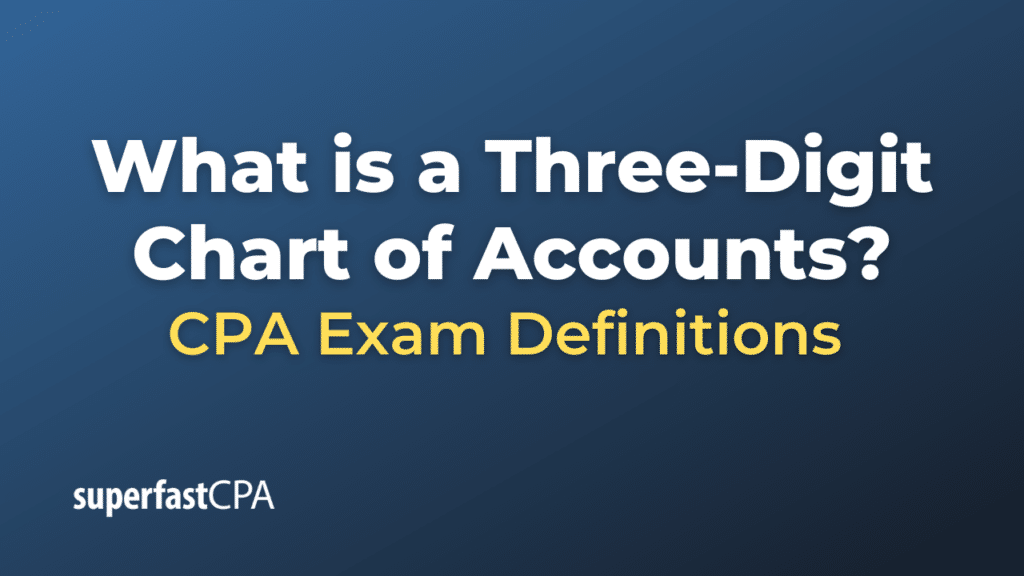Three-Digit Chart of Accounts
A Chart of Accounts (COA) is a listing of financial accounts used in the general ledger of an organization to organize its financial transactions. The structure and length of the account numbering in a COA can vary depending on the complexity and size of an organization.
A three-digit Chart of Accounts means that each account in the COA is represented by a three-digit number. The use of three digits allows for categorization and division of accounts, but at a high level. Larger organizations with more complex financial activities might use a longer numbering system to capture more categories and subcategories of accounts.
Example of a Three-Digit Chart of Accounts
Let’s create a fictitious example using a small bakery business and a three-digit Chart of Accounts.
Bakery Biz: Three-Digit Chart of Accounts:
- Assets:
- 100: Current Assets
- 101: Cash
- 102: Accounts Receivable (from customers who buy on credit)
- 103: Baking Supplies Inventory (flour, sugar, eggs, etc.)
- 200: Fixed Assets
- 201: Bakery Equipment (ovens, mixers)
- 202: Bakery Furniture (tables, chairs)
- 100: Current Assets
- Liabilities:
- 300: Current Liabilities
- 301: Accounts Payable (to suppliers)
- 302: Short-term Loan (perhaps for initial setup)
- 400: Long-term Liabilities
- 401: Long-term Loan (maybe for buying bakery space or significant equipment)
- 300: Current Liabilities
- Equity:
- 500: Owner’s Capital (initial investment by the owner)
- 510: Retained Earnings (profits reinvested in the business)
- Revenue:
- 600: Sales Revenue
- Expenses:
- 700: Cost of Goods Sold (COGS)
- 800: Operating Expenses
- 801: Salaries and Wages (for employees)
- 802: Rent (for bakery space)
- 803: Utilities (electricity, water)
- 804: Marketing and Advertising
In this example, our fictitious bakery business has a basic three-digit Chart of Accounts to organize its financial transactions. The bakery tracks its assets, including current items like cash and inventory and long-term assets like equipment. It also keeps tabs on its debts, both short-term and long-term. The bakery has various revenue streams, like bread, pastries, and custom cakes. Finally, it tracks expenses associated with producing goods and running the business.
The three-digit structure allows for a broad categorization, suitable for a small business. As “Bakery Biz” grows, it may need to expand its COA to accommodate more detailed or additional accounts.













